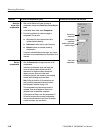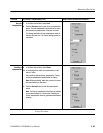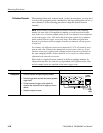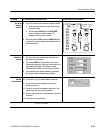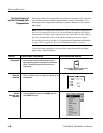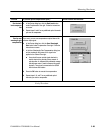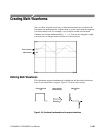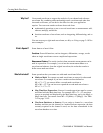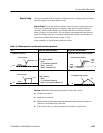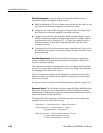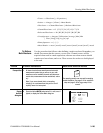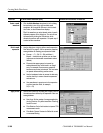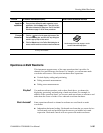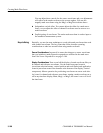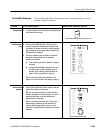
Creating Math Waveforms
3-102
CSA8000B & TDS8000B User Manual
Create math waveforms to support the analysis of your channel and reference
waveforms. By combining and transforming source waveforms and other data
into math waveforms, you can derive the data view that your application
requires. You can create math waveforms that result from:
H mathematical operations on one or several waveforms or measurements: add,
subtract, multiply, and divide.
H function transforms of waveforms, such as integrating, differentiating, and so
on.
You can create up to eight math waveforms; see Keys to Using on page 3--103 for
more examples.
Some features of note follow:
Functions. Powerful functions, such as integrate, differentiate, average, can be
taken on single waveforms or more complicated expressions.
Measurement Scalars. The results (scalars) from automatic measurements can be
used in expressions. For example, you can use the measurement Mean on a
waveform and subtract, from the original waveform, the scalar that results to
define a new math waveform.
Some operations that you cannot use with math waveforms follow:
H Math-on-Math. You cannot use math waveforms as sources for other math
waveforms. For example if you have a math waveform defined as
M1 = C1 -- C2, you cannot define a second math waveform as
M2 = M1 + C3. You can however expand the second math waveform to
M2 = C1 -- C2 + C3.
H Mag Time Base Expressions. S ources for math expressions must be sources
associated with the Main time base. For example, M3 = C1 + C2 uses these
sources as acquired and displayed by the Main time base, not by the Mag1 or
Mag2 time base. You cannot create M3 = C1(Main) -- C2(Mag1). See Table
3--8 on page 3--103.
H Waveform Databases as Sources. If you assign a channel to a waveform
database and then use the channel in a math-waveform expression, the data
currently acquired in the channel is used, not the data accumulated in the
waveform database over time.
Why Use?
What’s Special?
What’s Excluded?



